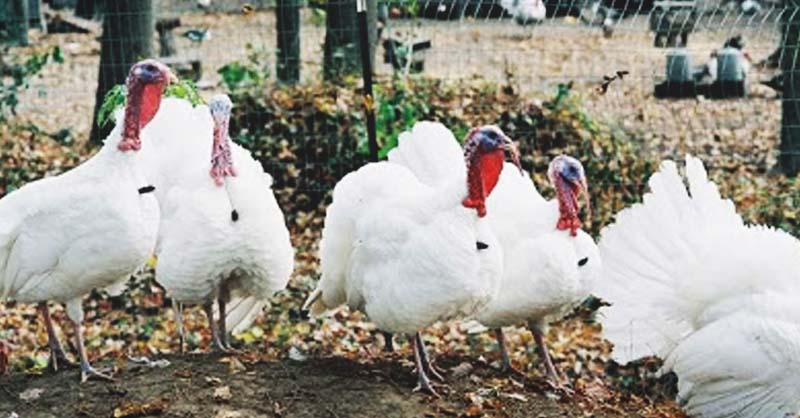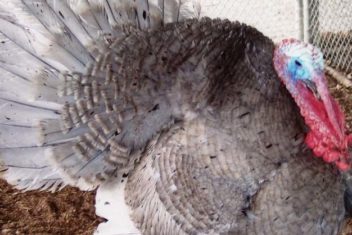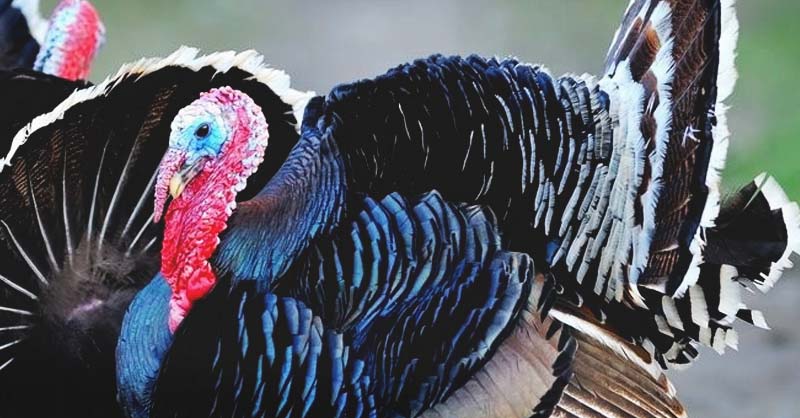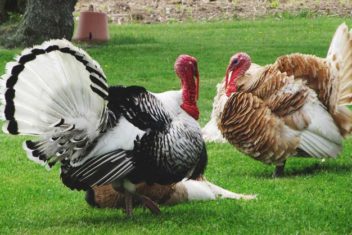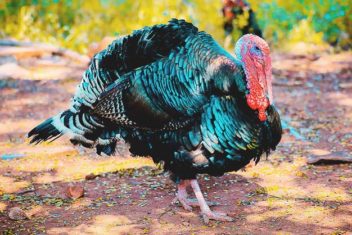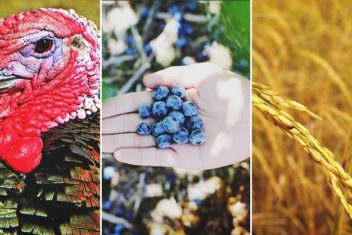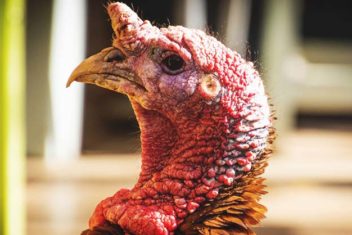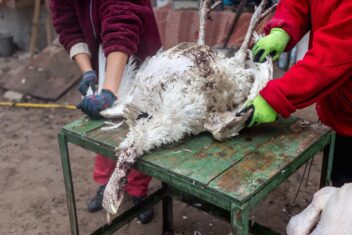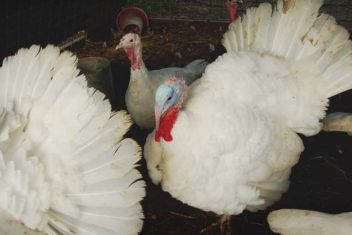Many people don’t have space or money to keep up with a 30-45 pound turkey until processing time. The Beltsville Small White Turkey is perfect for a smaller scale farmer with limited space. Many farmers have found this to be a very charming and accommodating breed that is a staple for many homesteads.
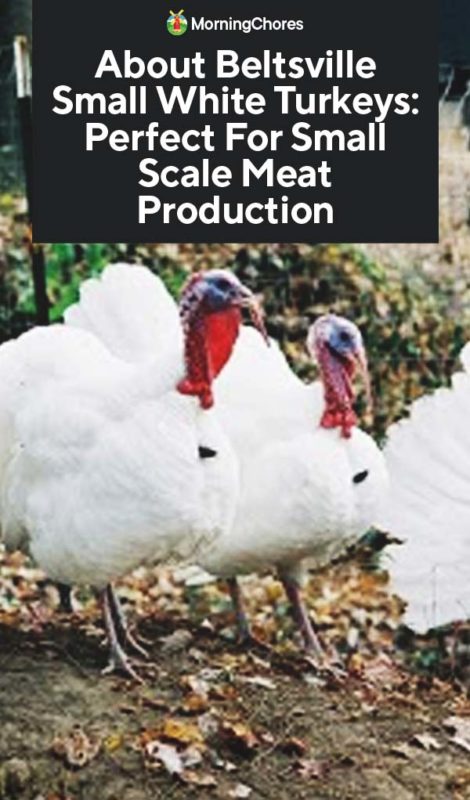
About Beltsville Small White Turkeys
This heritage variety is not large enough to satisfy commercial demands, but there was definitely a demand for a small turkey breed when it was created in the early 1900s.
The “Beltsville” in the name originated from the fact that the variety was created in Beltsville, Maryland. The breeding program for the variety existed between 1934-1941. During this time, the Bronze, Narragansett, White Austrian, White Holland, and wild turkeys were used to create the Beltsville Small White that we have today.
Characteristics of Beltsville Small White Turkeys
1. Temperament
These turkeys are of good and docile temperament that makes them very manageable. I feel like turkeys, in general, have a more outgoing personality than other types of poultry such as chickens or ducks. The Beltsville Small Whites are no exception to this, with their friendly and outgoing little personalities.
2. Size and Weight
These turkeys are hardly any larger than some of the biggest chickens, like Jersey Giants. Tom turkeys tip the scales at a mere 17 pounds. Turkey hens are just about 10 pounds, so they certainly aren’t the largest turkeys around.
3. Meat Production
As one could assume based on their live weight, these birds aren’t going to dress out large. However, Beltsville Small Whites do dress out beautifully. Part of the criteria in the Beltsville Small White turkey breeding program was a bird with white pinfeathers, resulting in a cleaner looking carcass.
Caring for Beltsville Small White Turkeys
1. Feeding and Nutritional Needs
Poults have rather rapid growth and require more protein than most poultry types. Supply your poults with a 30% protein starter until the poults reach 8 weeks of age. Once your poults are 8 weeks old, transition them to a good flock raiser with 20% protein.
Turkeys being raised for meat can remain on this flock raiser until butchering time. However, if you have turkey hens laying eggs, it is best to put them on game bird laying feed during laying season.
If possible, keep your tom turkeys on flock raiser while your hens eat the laying feed. During the off-season when your turkeys are not producing eggs, you can put the whole flock on their flock raiser.
2. Housing and Fencing
Usually, turkeys require a large amount of space, but these birds demand little more than large chickens. Inside the coop, provide 5-6 square feet per turkey. Place the roosts no more than 24 inches off the ground because heavy birds can develop leg problems by hopping off high places.
Outside, these birds can free range with little danger of aerial predators due to their larger size. However, if you prefer to contain your turkeys, make sure to provide 12-15 square feet per bird in the run.
3. Health Issues and Care
Beltsville Small White Turkeys are not specifically susceptible to any health issues. However, Blackhead is a common health issue that plagues many turkeys. It’s important to learn the signs and prevention for Blackhead so you can maintain a healthy flock.
Chickens are not as vulnerable to Blackhead as turkeys are, but they can be carriers of the parasite and get turkeys sick. It’s recommended to house your turkeys and chickens separately if you own both types of poultry. Despite the recommendations, many people house their poultry together with no adverse reactions.
In addition to Blackhead, be vigilant for internal and external parasites on your turkeys such as worms, mites, and lice. Make sure they have plenty of dust bathing space to rid themselves of the pesky critters.
A watchful eye on your flock to catch any issues early on so you can treat your birds, is key to maintaining a happy and healthy flock.
4. Breeding
In the 1970s, lack of popularity for the variety nearly caused extinction for the Beltsville Small White turkeys. Today, the variety is still listed as critically endangered by the Livestock Conservancy. There have been some efforts extended to help conserve the variety in the United States as well as Canada.
If one were to pursue breeding this bird, locating good stock would be tricky, but well worth the effort. Once you have good stock, you can maintain and grow your flock, which can be a profitable venture for a rare variety such as the Beltsville Small White.
Variety Alternatives
1. Midget White Turkeys
Midget White turkeys are commonly mistaken for the Beltsville Small White, so there are some big similarities. The Midget Whites seem to be slightly better meat producers, while Beltsville Small Whites are reported to be better layers.
Did You Know?
The idea for the Beltsville Small White turkey originated when a survey filled out by home consumers reported that 87% of them wanted a turkey that weighed less than 15 pounds.
Today only one large flock of this variety is still around, at a university in Iowa.
Do you think the Beltsville Small White turkey is a good fit for your homestead? For any small scale farmer, this turkey could be a very viable option. You may just fall in love with this small and perky turkey!

